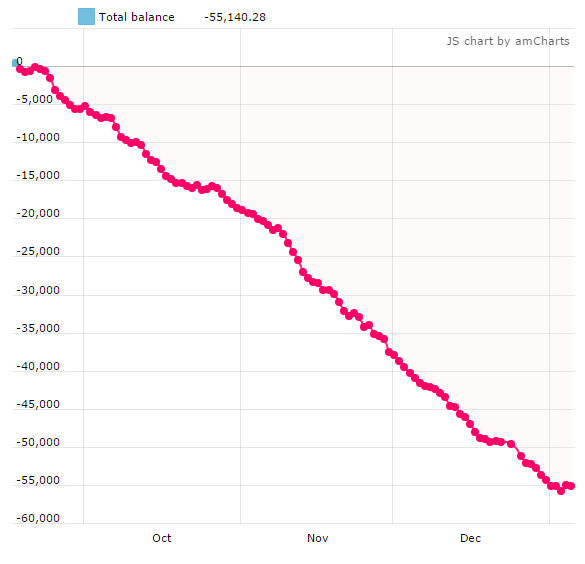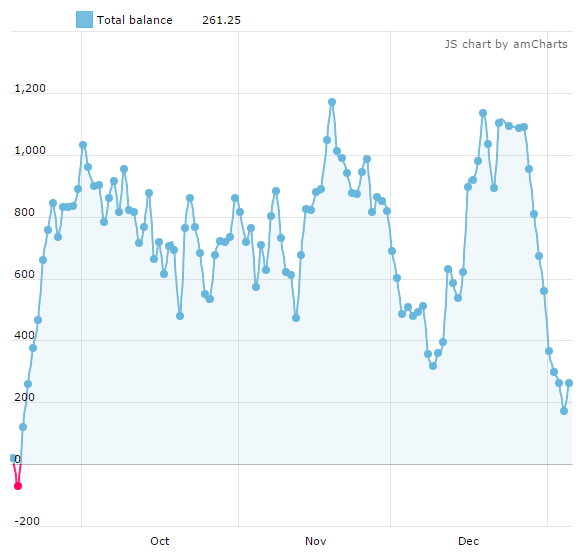Beating the Closing Line refers to obtaining better odds than the final pre-event odds. This is also known as beating the Start Price, or Closing Line Value (CLV) in the United States.
Bettors that can find a way to consistently beat the Closing Line are likely to generate winnings over the long haul. But in practice, that’s far more challenging than it seems.
In this article I use my own research & findings to prove that beating the Closing Line gives bettors the maximum chance of success. I also provide several tips for how to beat the Closing Line on a consistent basis.
Article Contents
Why Beating the Closing Line (CLV) Matters
The Closing Line simply refers to the odds at the time an event starts. It’s sometimes referred to as the ‘Starting Price’, or just ‘SP’.
But how and why is the Closing Line significant? Why would beating it improve the chances of making a profit?
Significance of the Closing Line
The Closing Line is significant because it marks the final pre-event point: when the odds are formed and the greatest volume of money has been transacted at betting exchanges before the markets go in-play. At this moment the odds incorporate all the opinions of the public — both retail and professional — from the build-up to the event.
Importantly, it’s hard to find value from the Closing Line because market participants have shaped the odds and eliminated obvious inaccuracies. Thus, right before an event begins, the odds are the sharpest they’ll ever be.
Using a betting exchange, bettors should expect to break even — or worse — by regularly taking the Starting Price. Hence most professional sports traders and value bettors operate earlier on, in pursuit of better odds.
Learn more about how the Starting Price is set for racing.
Betting Above the Closing Line
Given the sharpness of the Closing Line, there’s a simple principle that holds true for all sports and markets:
If you consistently bet at higher odds than the Closing Line (the Betfair Start Price), then what you have found is value — and it will succeed in the long run. This is known as “Beating the Closing Line”.
So, if you compare every price you take with the Starting Price, you’ll have a solid measure of how valuable your bets really were, regardless of short-term profit.
Generally:
- If your betting odds DRIFT (rise) by the start of the event, you have failed to beat the Closing Line; the bet carries no value as it goes in-play.
- If your betting odds STEAM (fall) by the start of the event, you have beaten the Closing Line; the bet has value as it goes in-play.
Therefore the Closing Line can be used to test whether any selection criteria, betting system, tipster service or other method is likely to be profitable, and it helps highlight false-positives and false-negatives.
The Bigger the Difference, the Better
While consistently beating the Closing Line is highly likely to return positive results, not all bets hold equal value.
Consider a horse backed at odds of 10.0 that shortens to 6.0 before the off — far better than a marginal move from 10.0 to 9.0, and a larger shift boosts the cash-out value offered by the exchange or bookmaker.
The key to increasing overall ROI is to beat the Start Price by the greatest margin, as often as possible.
How Accurate Is the Closing Line?
The idea of beating the Closing Line rests on the market’s efficiency. Can the markets really be trusted?
Seasoned bettors know that Betfair markets for UK horse racing and top-flight football are extremely efficient. Provided sufficient liquidity, the Betfair Start Price is accurate enough to base analysis on — something I’ll demonstrate below. (For a bookmaker reference, many analysts use the Pinnacle Closing Line.)
Traditional soft bookmakers add bigger margins, so their closing prices aren’t dependable for value checks.
Proof That Beating the Closing Line Produces Positive Results
Still sceptical? The following data from a large test strategy should change your mind.
Strategy Details:
- 59,281 Back bets
- Horse racing only
- All bets placed on race-day up to the ‘off’
- £10 level stakes
- 5 % Betfair commission assumed
- Average price taken: 8.66
- The sample made a profit
Bets That Beat the Closing Line
The strategy placed 31,448 bets above BSP, yielding +19.62 % ROI after commission (53.04 % of all bets). The average price taken was 13.72 % above SP.
PnL of bets that beat the Closing Line

Bets That Didn’t Beat the Closing Line
The 25,693 bets struck below BSP (43.34 % of the total) produced −22.35 % ROI after commission. Their average BSP was 20.16 % higher than the odds taken.
PnL of bets that missed the Closing Line

Non-Movers — Odds Same as the Closing Line
The 2,140 non-movers (3.6 % of bets) produced a marginal +1.09 % ROI.
PnL of bets that matched the Closing Line

What Do the Results Mean?
Thousands of bets confirm the exchange is efficient: those that beat BSP win in aggregate, those that don’t, lose.
The Closing Line is therefore a reliable yardstick for value.
To improve results you must:
- Maximise bets that shorten by the start.
- Minimise bets that drift.
GodsOfOdds reached the same conclusion: beating the closing line is vital.
Strategy Improvements
Two simple rules sharpen the test strategy:
- Trade out of Risers (scratch or small loss).
- Hold Fallers (or lay off later).
Price swings can be sharp, so timing is everything.
So how can you beat the Closing Line?
Approach 1: Use Arb & Value-Bet Finders
A steady feed of arbs or value bets is the quickest route. Over a large enough sample they beat BSP. If you’re new to arbing, begin with the Arbitrage Betting Guide.
For software recommendations, see Best Value Betting Software.
Approach 2: Learn Trading Techniques
Sports trading demands discipline, data and practice.
“Cold” Trading
Many successful horse-race traders rely solely on price action — see Cold Trading. A key late-market metric is the Weight of Money.
Matched money surges in the last 30 minutes before a race
Identify Human Influences
Crowd emotion moves prices. Watch for steamers & drifters triggered by herd mentality; mis-moves create value-betting opportunities.
Approach 3: Analyse Past Data
Some bettors model historical data instead. For context, read Which Sports Are Best for Betting?
Basic Statistics
Use trainer/jockey strike-rates, ground, race type and so on. See What Causes Pre-Race Market Movements?
Advanced Statistics
Pedigree analysis can reveal mis-priced maidens — learn more about Horse Pedigree & Breeding.
You can source data from:
Complications
- The market may be right and you wrong.
- If your method becomes popular, the edge disappears.
- If your prices mirror the exchange consensus, you’re compiling odds, not finding value.
- Edges erode as competitors catch on.
I hope this equips you to start beating the Closing Line — and to master value betting in general. Good luck.
- E-Sports Betting Growth: What Traditional Sports Bettors Should Know - October 29, 2025
- Bookmakers With The Most Sports & Markets | Bookie Depth - October 28, 2025
- What Ancient Gambling Can Teach Us About Modern Betting - October 27, 2025



